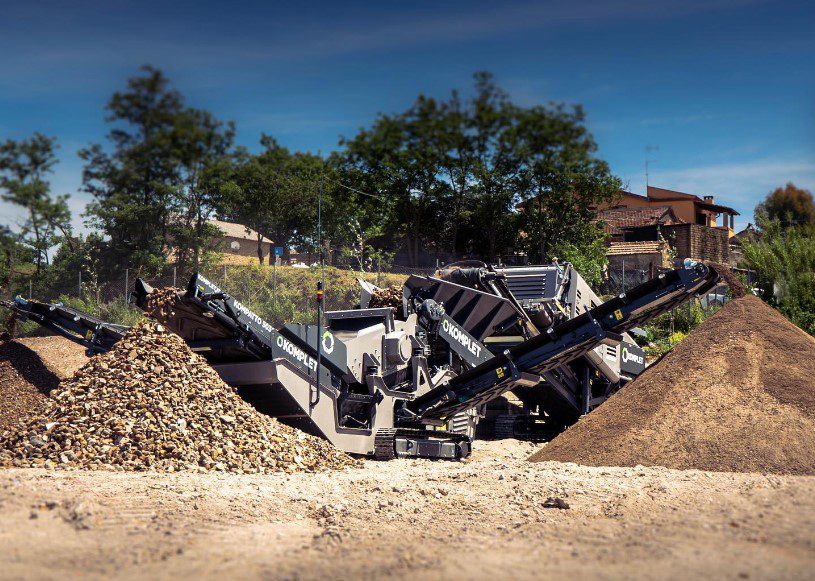For anyone in the construction, mining, or aggregate industries, maximizing the output of your mobile crusher is a crucial goal. The efficiency and productivity of your mobile crusher directly impact your project’s success and profitability.
A high-performing crusher leads to better throughput, reduced costs, and faster project completion. In this blog post, we’ll explore actionable tips and tricks on how to increase the efficiency and output of a mobile crusher, covering factors like feed size, pre-screening, and wear part management.
1. Optimize Feed Size
The feed size is one of the most important factors that influence crusher output and efficiency. Ensuring that the material being fed into the crusher is appropriately sized can greatly enhance performance:
- Maintain Consistent Feed Size: The crusher’s efficiency is highest when the feed size is within the specified range. Feeding material that is too large or too small can cause blockages or reduce the crushing force, resulting in lower output. Aim for a consistent, manageable feed size to keep the crusher operating efficiently.
- Avoid Overloading: Overfeeding the crusher can lead to a reduction in efficiency and potential damage. When the feed material exceeds the capacity of the crusher, it leads to increased wear on the components and lowers the overall throughput. Feeding the crusher at a steady, controlled rate is key to maintaining maximum output.
- Eliminate Oversized Material: If oversized material is introduced, it can lead to costly downtime for blockage removal and even damage the crusher. Utilize equipment like grizzly screens or hydraulic hammers to remove large material before it enters the crusher.
2. Utilize Pre-Screening Effectively
Pre-screening can help enhance the efficiency of your mobile crusher and improve overall productivity:
- Filter Out Fines Before Crushing: Installing a pre-screening unit ensures that fines and smaller particles are separated before they enter the crusher. This process reduces wear on the crusher, allowing it to focus on processing the larger, more valuable material. This reduces energy consumption and increases the overall throughput.
- Select the Right Screen Size: The choice of screen size in the pre-screening unit can make a big difference. A properly sized screen will effectively filter out unwanted material, reducing the load on the crusher and improving efficiency. The goal is to ensure that the material fed into the crusher is as clean and consistent as possible.
- Match Screening Capacity with Crushing Capacity: Ensure that the pre-screening unit is capable of handling the amount of material the crusher processes. A mismatch can lead to bottlenecks that limit the overall efficiency and output of the entire operation.

3. Manage Wear Parts Effectively
Wear parts are vital components of a mobile crusher, and managing them effectively can significantly improve efficiency and output:
- Monitor Wear Part Condition: Regularly inspect worn parts, such as jaw plates, liners, and cheek plates, to assess their condition. Worn parts reduce the crushing efficiency, increase energy consumption, and can cause other parts to wear out more quickly. Replacing worn parts at the right time ensures that your crusher operates at peak performance.
- Use High-Quality Wear Parts: Investing in high-quality wear parts can pay off in the long run. While cheaper parts may seem like a good way to save money, they often wear out faster and may not provide the same level of performance. Quality wear parts are designed for durability and are better suited to handling the stress of crushing, which leads to improved efficiency and output.
- Optimize Wear Part Selection: Selecting the right wear parts based on the material being crushed can enhance efficiency. For example, different types of jaw plates are designed for different materials. Choosing the right type of jaw plate ensures optimal crushing force and reduces unnecessary wear.
4. Proper Maintenance is Key
Regular maintenance plays an important role in maximizing the output of your mobile crusher:
- Follow a Maintenance Schedule: A consistent maintenance schedule helps ensure that the crusher operates at its full potential. Regular maintenance tasks include checking fluid levels, inspecting worn parts, and cleaning components to remove dust and debris. Following the manufacturer’s recommended maintenance intervals will reduce the likelihood of unplanned downtime and increase overall output.
- Minimize Downtime with Planned Maintenance: Unplanned breakdowns can lead to significant production losses. Planning maintenance during off-peak hours helps to avoid unnecessary downtime during critical crushing periods. Keep an inventory of essential spare parts to ensure any issues can be quickly addressed, minimizing disruption.
5. Optimize Crushing Settings
Optimizing the settings of your crusher can significantly improve its efficiency and output:
- Adjust the Crusher Settings Based on Material: Different materials require different crushing settings for optimal efficiency. Adjusting settings like the CSS (Closed Side Setting) to match the material being crushed ensures efficient crushing. For example, harder materials may require a narrower CSS, whereas softer materials might benefit from a wider setting.
- Balance Speed and Throughput: Adjusting the speed of the crusher’s flywheel can help optimize the balance between throughput and efficiency. Running the crusher too fast can reduce its efficiency, while running it too slowly can reduce the throughput. Finding the right balance is key to maximizing output.
6. Maintain Consistent Material Flow
Maintaining a consistent material flow is critical for maximizing the output of your mobile crusher:
- Use a Feed Hopper: A feed hopper helps to maintain a constant flow of material into the crusher, reducing surges that can cause blockages or inefficiencies. A consistent flow ensures that the crusher operates at optimal efficiency throughout the process.
- Avoid Material Segregation: Segregation of the material being fed into the crusher can lead to uneven distribution and reduced efficiency. It’s important to mix the material thoroughly to ensure a consistent blend, which helps maintain steady output.
7. Train Operators Properly
Well-trained operators are essential for maximizing the output of a mobile crusher:
- Operator Training: Provide adequate training to your operators on the proper operation and maintenance of the crusher. Trained operators are better equipped to adjust settings, recognize potential issues, and make decisions that enhance efficiency and output.
- Encourage Best Practices: Encourage operators to follow best practices, such as avoiding overloading, minimizing idle time, and monitoring the condition of worn parts. Small adjustments can make a big difference in the overall output of the crusher.
Conclusion
Maximizing the output of your mobile crusher is all about optimizing every aspect of its operation—from feed size and pre-screening to wear part management and operator training.
By implementing these tips and tricks, you can significantly improve the efficiency and productivity of your crushing operations, reducing costs and ensuring a better return on investment. With the right approach and a focus on continuous improvement, your mobile crusher will deliver consistent, high-quality results for years to come.

